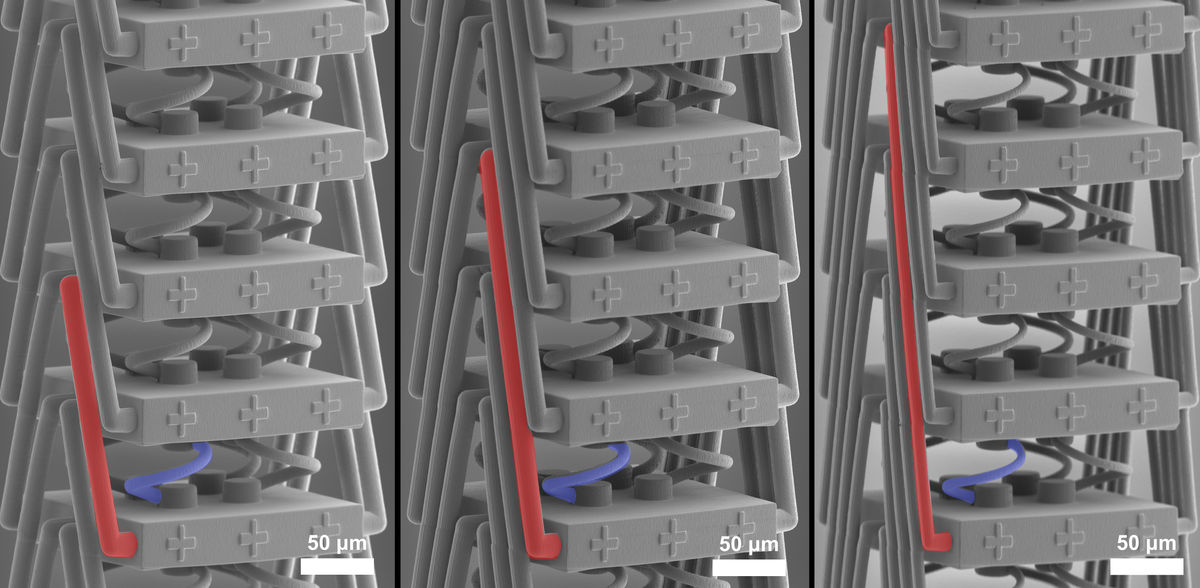Material with innovative stretch properties developed
KIT researchers produce metamaterial that stretches and compresses differently than conventional materials
Advertisement
metamaterials are artificially developed materials that do not occur in nature. Their building blocks function like atoms in conventional materials, but have special optical, electrical or magnetic properties. The interaction between the building blocks is crucial to their function: Until now, this was usually only possible with directly neighboring building blocks, i.e. locally. Researchers at the Karlsruhe Institute of Technology (KIT) have developed a mechanical metamaterial with which these interactions can also be triggered over greater distances in the material. The material could be used to measure forces or monitor statics.
Professor Martin Wegener's working group at the Institute of Applied Physics (APH) at KIT has thus succeeded in overcoming a limitation in metamaterials. Lead author Dr. Yi Chen compares this to human communication and an effect known from the game "Silent Mail": if you communicate with a person via an intermediary, you can end up with something completely different than in a direct conversation with that person. This principle also applies to metamaterials, says Chen. "The material we designed has special structures (red in the illustration). These allow individual building blocks to 'communicate' not only via their neighbors with more distant building blocks, but also directly with all other building blocks in the material," says the scientist.
Experiments on 3D-printed microscopic samples
"These structures give the material fascinating properties, such as unusual stretching properties," reports co-author Ke Wang from APH. The team was able to demonstrate this using micrometer-sized material samples, which they produced using 3D laser printing technology, examined under a microscope and recorded with a camera. This showed that a one-dimensional strand (1D), which was pulled from one end, did not expand evenly.
Unlike a rubber band, for example, which stretches evenly when pulled, the metamaterial even showed compression in some places. Shorter sections of the metamaterial could also be stretched more than longer sections, even if the same force was applied everywhere. "This unusual behavior, where individual elongations and compressions only occur locally, is not possible in conventional materials," says Jonathan Schneider from APH, also a co-author. "We will now also investigate this in two-dimensional (plate-like) materials and three-dimensional materials."
Another potentially useful property could be that the metamaterial reacts highly sensitively to stress. Depending on the point in the material at which force is applied, this can lead to completely different expansion reactions, even at more distant points. According to the research team, reactions in a conventional material can only be observed directly at the point where the force is applied, while only weak or negligible effects can be observed at distant points in the material. A material with this sensitivity could be valuable for applications where forces need to be measured on a larger scale, such as monitoring building deformations in engineering or characterizing cell forces in biological research.
Note: This article has been translated using a computer system without human intervention. LUMITOS offers these automatic translations to present a wider range of current news. Since this article has been translated with automatic translation, it is possible that it contains errors in vocabulary, syntax or grammar. The original article in German can be found here.


































































